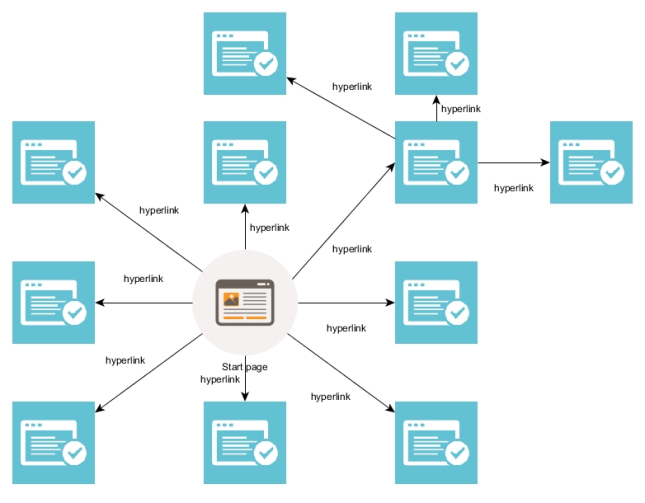With probably the most unpronounceable acronym in the world of IT, and there are a lot, HATEOAS is also one of the most obscure and misunderstood constraints of the REST specification. In this article I will make an attempt to shed some light on the world of hypermedia and HATEOAS.
Let’s start with listing the complete list of the constraints of REST to give us some context on where the HATEOAS constraint sits in the REST constraints.
- Client-server
- Stateless server
- Cache
- Uniform interface
- Identification of resources
- Manipulation of resources through representations
- Self-descriptive messages
- Hypermedia as the engine of application state (HATEOAS)
- Layered System
- Code-on-Demand
As we just saw in the list of constraints HATEOAS stands for “Hypermedia As The Engine Of Application State”. So, what does this mean?
To grab the concept it’s helpful to think of a regular webpage. When browsing to a page there are, most of the time, various hyperlinks available which you can use to navigate further to other pages. These pages are essentially the “state” of the web(application).
To quote Roy Fielding from his thesis about RESTful architecture and design:
“The name ‘Representational State Transfer’ is intended to evoke an image of how a well-designed Web application behaves: a network of web pages (a virtual state-machine), where the user progresses through the application by selecting links (state transitions), resulting in the next page (representing the next state of the application) being transferred to the user and rendered for their use.”-Roy Fielding
Architectural Styles and the Design of Network-based Software Architectures
Chapter 6
So in essence the states are the various webpages and the transitions to the different states are the hyperlinks. The hyperlinks are the “engine” to which the state transfer can occur.
Above we see a diagram of various webpages, when starting to browse the internet we start at an initial starting page. Clicking links on this starting page we can browse to other pages. Except from changing the URL manually in the browser address bar, the pages we can open via hyperlinks are dictated by the first page itself. The state transitions are controlled by the web application. This is an important concept in HATEOAS as well. Also the endpoints are hidden from an end user perspective.
As stated above the webpages are states of the (web)application and the hyperlinks are the mechanism (engine) to changing the state. We can abstract our webpages diagram also to this:
So… how does this applies to REST and HATEOAS?
The way to implement HATEOAS is pretty straightforward: in each response message add the link(s) for possible next request messages. Therefore give the opportunity to the consumer of the REST service to transition the state via the links in the response message.
A very simplified example of a HATEOAS response:
{
"stocklist": {
"name": "ACME",
"price": "10.00",
"link": [
{
"rel": "self",
"href": "/stock/ACME",
"method": "get"
},
{
"rel": "buy",
"href": "/account/ACME/buy",
"method": "post"
},
{
"rel": "sell",
"href": "/account/ACME/sell",
"method": "post"
}
]
}
}
In our simple example response we request the stock information for ACME. We get the price back, but in addition the links to either buy or sell the stock.
So when we add links to our responses does that mean we are now truly RESTfull?
Again, Roy Fielding seems pretty clear about this:
“If the engine of application state (and hence the API) is not being driven by hypertext, then it cannot be RESTful and cannot be a REST API. Period. Is there some broker manual somewhere that needs to be fixed?”-Roy Fielding
REST APIs must be hypertext-driven
Untangled: Musings of Roy T. Fielding
But, are we truly RESTful if we include hyperlinks in our responses?
The thing is, people do not use REST API’s. People use apps and sites and those apps and site use those REST API’s. So what does this mean? It means that if the app or site developer chooses not to use the HATEOAS links in the response the end user cannot state transition using hypermedia and ergo we are not truly HATEOAS compliant and thus RESTful.
So, adding the links in the responses is an important step in HATEOAS and RESTful compliant, it is only the first step.
HATEOAS is one of the more misunderstood and forgotten REST constraints. I hope this blogpost will help you in better grasp this REST constraint.





